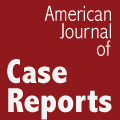Effect of Patient Education Seminars on Awareness and Behavior of Individuals with Viral Liver Disease
Yumiko Nagao, Yuji Kawahigashi, Michio Sata, Haruhiko Nobayashi
Med Sci Tech 2015; 56:120-126
DOI: 10.12659/MST.896508
Available online: 2015-11-30
Published: 2015-11-30
BACKGROUND:
The annual death rate from hepatocellular carcinoma (HCC) exceeds 30 000 in Japan and social control measures are urgently needed. It is important to impart knowledge about the condition and the latest therapies for viral hepatitis by holding educational seminars for affected patients. However, there are few reports indicating the impact of education on patients with liver disease. The aim of this study was to investigate the awareness and to survey the behavior of participants to whom medical information was offered in the seminar.
MATERIAL AND METHODS:
We sent a questionnaire to 130 representative enrollees (from a total of 178) who participated in the 23rd seminar. The questionnaire addressed the following: background, knowledge, aggressiveness, information gathering, conversation, anxiety, willingness to challenge, power of communication, trust in the seminar lecturer, feeling of happiness, and continued participation.
RESULTS:
We collected information from 119 of 130 individuals (91.5%) on an anonymous basis through a postal survey; of these, 98 had liver disease (group A) and 21 had no liver disease (group B). Significant differences between the groups were the number of times of participation, age, knowledge of liver disease, willingness to challenge new treatments after participating in the seminar, and the power of communication. According to multivariate analysis, 5 factors were associated with attending more than 5 seminars: knowledge of extrahepatic manifestations, age 60 years or older, feeling of happiness from participating in the seminar, improved ability to access information about liver disease after participating in the seminar, and increased conversation about the liver disease after participating in the seminar. The adjusted odds ratios for these 5 factors were 13.94, 9.54, 7.74, 6.29, and 5.43, respectively, and each was statistically significant.
CONCLUSIONS:
Repeated participation in the seminars led to increased knowledge and active behavior regarding liver disease. This approach should be effective for problem solving regarding the medical treatment of patients with a greater understanding of their disease.
Keywords: Hepacivirus, Hepatitis B virus, Interferons, Patient Education Handout



